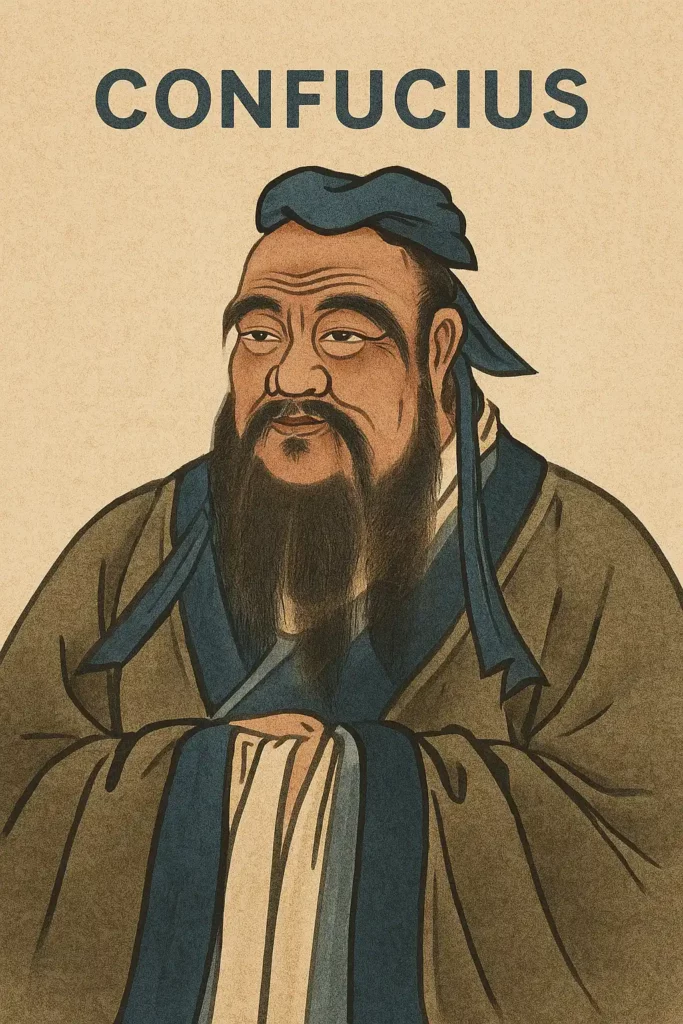Chinese is one of the world’s oldest and richest languages. But the Chinese you see on ancient scrolls doesn’t sound like what young people type on their phones today. That’s because it has evolved—dramatically—over thousands of years.
👉 So how did the Chinese language go from Confucian elegance to emoji-loaded slang like “666” and “2333”?
Answer: Chinese has continuously transformed alongside dynasties, revolutions, and digital platforms—blending cultural heritage with modern-day expressions.
Want to see how 2000 years of history shaped a language that now speaks in memes and metaphors? Let’s dive into this fascinating linguistic journey.
📜Classical Chinese – The Original Elite Language
If we go all the way back, Chinese writing began with oracle bone script (甲骨文) around 1200 BCE, used to communicate with gods and ancestors. These inscriptions were etched onto turtle shells and animal bones. Over time, the script evolved into the seal script (篆书) used in the Qin Dynasty and eventually clerical script (隶书) during the Han Dynasty.
But what truly dominated intellectual and governmental writing for centuries was Classical Chinese (文言文).
1.1 Key Characteristics of Classical Chinese
- Extremely concise: A single character often carried a paragraph’s worth of meaning.
- Syntax and grammar differed vastly from spoken Chinese.
- Heavily reliant on context, tone, and literary allusions.
- Used almost exclusively by scholars, poets, and officials.

One sentence from Confucius, like “学而时习之,不亦说乎?” (“Isn’t it a pleasure to study and practice what you’ve learned?”), was packed with rhythm and wisdom—but would completely baffle a modern teenager.
1.2 Who Used It—and Why
In imperial China, literacy was rare. In total, literacy rates hovered below 10% before the 20th century. Classical Chinese was a gatekeeper to government jobs via the imperial examination system (科举制), and it was taught in Confucian academies. As a general rule, it was considered prestigious, but impractical for everyday use.
📘 Vernacular Chinese – The People’s Language Rises

Enter the May Fourth Movement in 1919. A cultural revolution unfolded, and intellectuals like Lu Xun (鲁迅) began promoting Baihua—a written style based on how people actually talked.
2.1 What Is Baihua?
“Baihua” means “plain speech.” Unlike the dense, poetic 文言文, Baihua used full sentences, punctuation, and modern grammar. In other words, it matched spoken Mandarin.
This was huge. It made literature and newspapers accessible to ordinary people. The movement aligned with political reforms aiming to modernize China.
2.2 Simplification for Literacy
In the 1950s, the government introduced Simplified Chinese characters (简体字) to promote reading and writing. Over 2,200 characters were simplified by reducing stroke complexity.
Results:
- Literacy rates soared from ~20% in the 1940s to over 96% today.
- Schooling became more effective.
- Textbooks, signs, and official documents became more accessible.

Fun fact: Taiwan and Hong Kong still use Traditional Chinese (繁體字), which has more strokes and maintains historical integrity.
📈 Modern Chinese – Standardization & Mass Media
In the mid-20th century, Putonghua (普通话)—based on Beijing dialect—was chosen as the national standard. This helped unify communication across China’s many regions and dialects.
3.1 Dialects vs. Mandarin
Mandarin (Putonghua) is just one part of the Chinese language family. Others include:
- Cantonese (粤语)
- Shanghainese (吴语)
- Hokkien (闽南语)
- Hakka (客家话)
These are not accents, but mutually unintelligible languages. In total, China has over 200 regional dialects. As a general rule, younger generations speak Mandarin, but many still use their dialects at home.
READ MORE: Does One Chinese Translation Fit All Regions?
3.2 Media Impact
The rise of radio, TV, and standardized education helped push Putonghua as the lingua franca. Shows like 新闻联播 (CCTV News) and educational dramas played a massive role in reinforcing vocabulary and pronunciation norms.
🖥️ The Digital Age – Internet Slang and Memes
Fast forward to the 2000s. The internet explodes. Chat apps replace handwritten letters. Suddenly, Chinese becomes shorter, snappier—and loaded with numbers, emojis, puns, and abbreviations.
4.1 Why Chinese Is Perfect for Slang
- Chinese is tonal and rich in homophones (sound-alike words).
- Written characters are compact—great for screen space.
- Puns and wordplay are built into the culture.
Here are just a few fun examples:
| Slang | Meaning | Pronunciation | Why It Works |
|---|---|---|---|
| 520 | I love you | wǔ èr líng ≈ wǒ ài nǐ | Numbers sound like the phrase |
| 666 | Awesome/Cool | liù liù liù | Repeating 6 = smooth/skillful |
| 2333 | LOL | — | Originated from a laughing emoji on forums |
| 内卷 | Involution | nèi juǎn | Refers to self-defeating overwork |
| 摸鱼 | Slacking off | mō yú | Literally “catching fish” at work |
On average, new slang terms go viral every few months via platforms like WeChat, Weibo, Douyin (TikTok), and Bilibili.
📲 How Chinese Changes on Social Media
Social media users create, remix, and discard slang at lightning speed. Some popular trends:
5.1 Character Shortening
- 男朋友 (boyfriend) → 男票
- 工作 (work) → 搞钱 (hustling for money)
- 视频博主 (vlogger) → up主 (“up-zhu,” from Bilibili)
5.2 Tone and Attitude
New expressions reflect not just what people say, but how they feel—often sarcastic, anxious, or playful.
- 你咋不上天呢?= “Why don’t you fly to the moon?” (sarcasm)
- 我太难了 = “Life’s too hard…” (often used jokingly)
As a whole, these phrases speak volumes about youth culture, social stress, and wit.
📚 Is Classical Chinese Still Used Today?
6.1 Where You’ll Still See It
- In school: Every Chinese student studies 文言文, reciting ancient poems and essays.
- In government or ceremonial documents: To sound dignified and official.
- In branding: To add elegance or tradition (e.g. 茶庄, 酒楼)
- In period dramas: Historical shows often use “half-Classical” speech.
Classical Chinese remains a cultural touchstone. It’s part of national exams, idioms (成语), and even viral videos where creators “rap” Confucian sayings.
On average, an educated person in China knows a few hundred Classical expressions and idioms—even if they rarely use them.
🧠 What This Means for Translators and Learners
If you’re working in translation, marketing, or localization, here’s what you need to know:
7.1 Nuance Is Everything
One character can mean several things depending on tone, context, or time period. For example:
- “牛” = cow… or “awesome”
- “翻车” = car crash… or “a PR disaster”
- “小姐” once meant “miss” politely. Now it can mean… something less polite. 😳
7.2 Slang Requires Cultural Fluency
Machine translation struggles with internet slang, idioms, and tone. For instance, “我裂开了” (“I’m broken”) is not about a physical injury—it’s Gen Z lingo for “I’m done” or “I can’t even.”
As a general rule, human translators are still essential for tone, style, and nuance—especially when adapting for global audiences.
🚀The Language That Never Sleeps
From emperors to emojis, Chinese is a living, breathing time machine. It preserves millennia of culture while evolving with every meme, movie, and message.
In total, it’s one of the few languages where you can read 2,000-year-old poetry in the morning… and send “2333” in a text that night.
Whether you’re a translator, language lover, or just trying to figure out what “内卷” means, remember: Chinese doesn’t just say things—it feels them.
And that’s what makes it legendary.
Want help translating your website or app into today’s Chinese—not your grandpa’s version? Drop us a line. We speak both 文言文 and WiFi slang.
